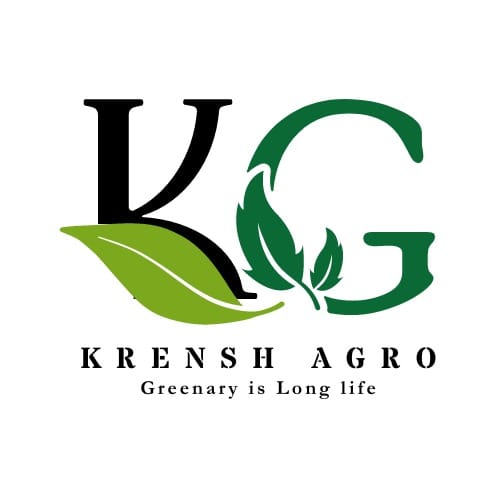How to save the Ozone layer.

Introduction
Definition of the Ozone Layer
The ozone layer is a thin part of Earth's atmosphere that contains a high concentration of ozone (a type of oxygen molecule). It is located about 10 to 30 miles above the Earth's surface.
Explanation of the Ozone Layer and Its Importance
The ozone layer acts like a shield, absorbing most of the sun's harmful ultraviolet (UV) rays. These UV rays can cause skin cancer, cataracts, and other health problems in humans, as well as harm animals and plants.
Functions of the Ozone Layer in Protecting Life on Earth
- Blocking Harmful UV Radiation: The ozone layer absorbs and scatters the sun's UV radiation, preventing most of it from reaching the Earth's surface.
- Protecting Human Health: By blocking UV rays, the ozone layer helps reduce the risk of skin cancer, cataracts, and other health issues.
- Safeguarding Ecosystems: It protects wildlife, especially marine organisms like plankton, which form the basis of the ocean food chain, and helps maintain the health of terrestrial plant life.
Current State of the Ozone Layer
- Overview of Ozone Depletion: In recent decades, scientists have discovered that the ozone layer is thinning in some areas, especially over the polar regions. This thinning is referred to as ozone depletion.
- Causes of Ozone Layer Damage: The main cause of ozone depletion is human-made chemicals called chlorofluorocarbons (CFCs) and other ozone-depleting substances (ODS). These chemicals were commonly used in refrigerators, air conditioners, and aerosol sprays. When they are released into the atmosphere, they break down ozone molecules, causing the ozone layer to thin.
Section 1: Understanding Ozone Depletion
Chemical Causes
Role of Chlorofluorocarbons (CFCs):
Chlorofluorocarbons, or CFCs, are chemicals that were widely used in products like refrigerators, air conditioners, and aerosol sprays. When these chemicals are released into the air, they eventually rise up to the ozone layer. Once there, CFCs are broken down by sunlight, releasing chlorine atoms that destroy ozone molecules.
Other Ozone-Depleting Substances (ODS):
Besides CFCs, there are other chemicals that also damage the ozone layer. These include:
- Halons: Used in fire extinguishers.
- Carbon Tetrachloride: Used in some industrial applications.
- Methyl Chloroform: Used in cleaning solvents.
These substances release chlorine or bromine when they break down, which then destroys ozone molecules.
Environmental Impact
Effects on Human Health:
When the ozone layer is damaged, more UV rays reach the Earth. This increase in UV radiation can cause several health problems for humans, such as:
- Skin Cancer: UV rays can damage skin cells, leading to an increased risk of skin cancer.
- Cataracts: UV radiation can also affect the eyes, causing cataracts, which can lead to vision problems or blindness.
Impact on Ecosystems:
The increased UV radiation due to ozone depletion also affects the environment:
- Marine Life: UV rays can harm tiny organisms in the ocean, like plankton. Plankton are crucial for the ocean food chain, so their decline can affect all marine life.
- Plants: Excessive UV radiation can damage the leaves of plants, reducing their growth and affecting the food supply for animals and humans.
In summary, ozone depletion has serious consequences for both human health and the environment.
Section 2: International Efforts and Policies
The Montreal Protocol
History and Significance of the Montreal Protocol:
The Montreal Protocol is an international treaty signed in 1987. Its goal is to protect the ozone layer by phasing out the production and use of chemicals that cause ozone depletion, like CFCs. This agreement is considered one of the most successful environmental treaties in history because it has been widely adopted and has made significant progress in reducing harmful substances.
Key Measures and Achievements:
- Phasing Out Harmful Chemicals: The treaty set specific deadlines for countries to stop using ozone-depleting substances (ODS).
- Global Participation: Almost every country in the world has signed the Montreal Protocol and committed to its goals.
- Recovery of the Ozone Layer: Because of the treaty, the ozone layer is slowly recovering, and scientists expect it to return to its 1980 levels by the middle of the 21st century.
Global Cooperation
Role of International Organizations and Agreements:
- United Nations (UN): The UN has played a key role in bringing countries together to agree on the Montreal Protocol and its amendments.
- Scientific and Environmental Groups: Organizations like the World Meteorological Organization (WMO) and the United Nations Environment Programme (UNEP) provide scientific data and support to monitor progress and guide policy.
Case Studies of Successful National Policies:
- United States: The US implemented strict regulations to phase out the use of CFCs and supported the development of alternative chemicals.
- European Union: The EU has enforced comprehensive legislation to eliminate the use of ODS and has promoted the use of environmentally friendly technologies.
- Developing Countries: With financial and technical assistance from developed nations, many developing countries have successfully transitioned away from ODS, contributing to global efforts to heal the ozone layer.
These efforts show how international cooperation and strong policies can effectively address environmental issues and lead to positive changes.
Section 3: Reducing Ozone-Depleting Substances
Regulation and Bans
Phasing Out the Production and Use of CFCs and Other ODS:
To protect the ozone layer, countries have agreed to gradually stop making and using chemicals that harm it, like CFCs (used in old refrigerators and sprays) and other ozone-depleting substances (ODS). This process is called "phasing out."
Legislation and Enforcement:
Governments have created laws to control the use of these harmful chemicals. They monitor companies to make sure they follow the rules and may impose penalties if they don't comply. This ensures that harmful substances are removed from use effectively.
Alternative Technologies
Development and Adoption of Ozone-Friendly Alternatives:
Scientists and companies have developed new chemicals and technologies that do not damage the ozone layer. These safer alternatives are now used in many products.
Innovations in Refrigeration, Air Conditioning, and Aerosol Products:
- Refrigeration: Modern refrigerators use coolants that are safe for the ozone layer.
- Air Conditioning: New air conditioners use ozone-friendly chemicals to cool the air.
- Aerosol Products: Spray cans now contain propellants that do not harm the ozone layer.
By adopting these new technologies, we can continue to enjoy these products without damaging the ozone layer, helping to protect our environment for future generations.
Section 4: Personal and Community Actions
Consumer Choices
Opting for Products that Do Not Harm the Ozone Layer:
As consumers, we can choose to buy products that are safe for the ozone layer. Look for items that say "CFC-free" or "ozone-friendly" on the label. This includes things like certain types of spray cans, air conditioners, and refrigerators.
Awareness and Education on Product Labels:
It's important to read labels on products to see if they contain harmful chemicals. Many products now have labels indicating whether they are safe for the ozone layer. Educating yourself and others about these labels helps everyone make better choices.
Community Initiatives
Local Campaigns to Reduce the Use of Harmful Substances:
Communities can organize campaigns to inform people about the importance of protecting the ozone layer and how to avoid using harmful substances. These campaigns can include events, workshops, and informational materials to spread awareness.
Community-Based Recycling and Disposal Programs:
Proper disposal of old refrigerators, air conditioners, and other products that contain harmful chemicals is crucial. Communities can set up recycling and disposal programs to safely handle these items, ensuring they don't release ozone-depleting substances into the atmosphere. These programs help manage waste responsibly and protect the environment.
By making smart choices as consumers and participating in community initiatives, everyone can contribute to saving the ozone layer.
Section 5: Future Strategies
Ongoing Research
Importance of Scientific Research in Monitoring Ozone Recovery:
Scientists continuously study the ozone layer to understand how well it's recovering from past damage. This research helps track progress and identify any new problems that might arise.
Advances in Atmospheric Science and Technology:
New technologies and scientific methods are being developed to better understand the atmosphere. These advancements help scientists predict future changes in the ozone layer and find more effective ways to protect it.
Sustainable Practices
Promoting Sustainable Industrial and Agricultural Practices:
Industries and farms can adopt practices that are less harmful to the environment. For example, using chemicals that don't deplete the ozone layer, reducing emissions, and managing waste responsibly.
Encouraging Green Policies and Renewable Energy:
Governments can support policies that promote the use of renewable energy sources like solar and wind power, which have less impact on the ozone layer. Encouraging energy efficiency and reducing reliance on fossil fuels can help protect the environment overall.
By investing in research and adopting sustainable practices, we can ensure the long-term health of the ozone layer and our planet.





